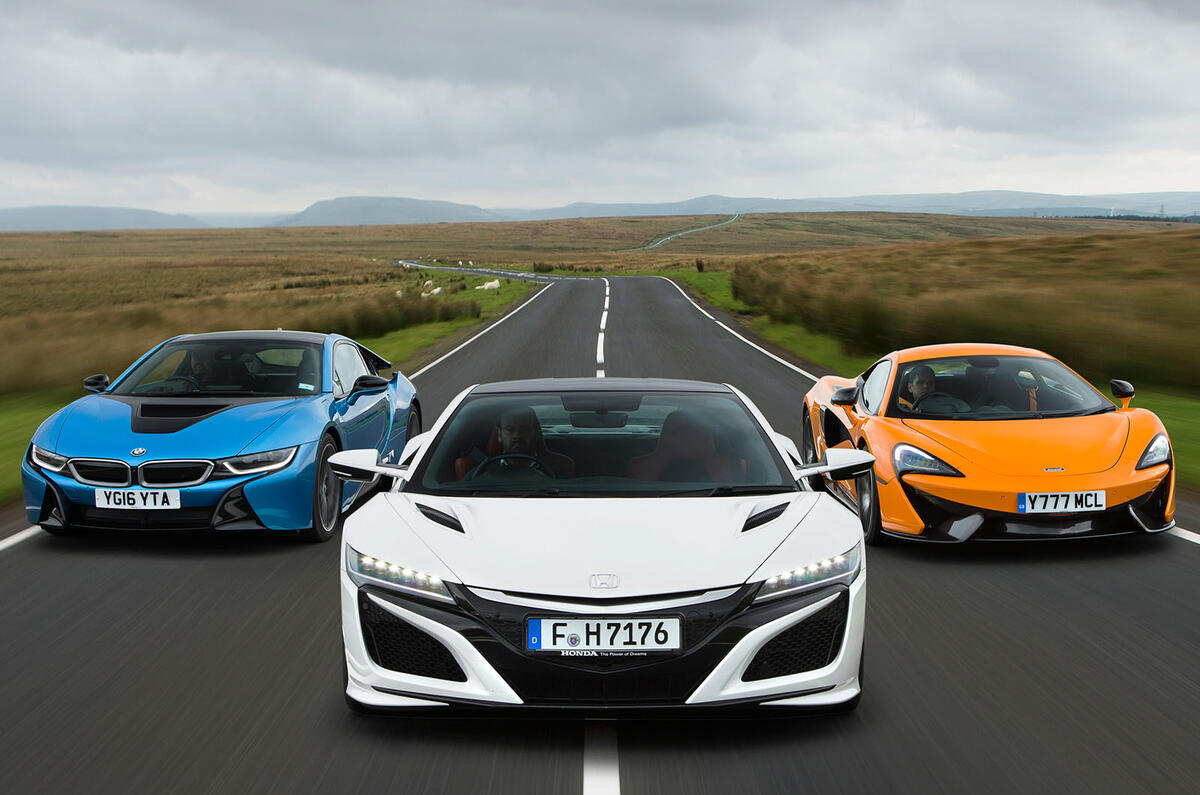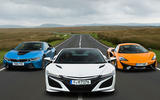Here we have it, the Honda NSX, BMW i8 and McLaren's 570S compared.
Animals. That’s what’s missing from this test. There are three badges on display here and there is not a horse or a bull among them. A decade ago, it would have been all but unthinkable to have what is, let’s be clear, one of the most exciting supercar tests of the year without the presence of a Porsche, Ferrari or Lamborghini. I’ll grant you that the entry price to this test is lower than many supercar group tests, but know one thing before the reckoning starts: it's none the worse, and no less exciting, for the absence of the traditional establishment.
The Honda NSX, then, is back. And everyone, apparently, knows it. I wouldn’t normally mention stuff like this, because it feels self-indulgent and in no way scientific, but in (cough)-teen years of doing this gig, I’ve never known three cars to garner such a positive reaction. When driving a Ferrari or a hot Porsche 911 for a few days, I’d expect to be called a knob half a dozen times or more. But in spite of, or perhaps because of, the fact that there are no cars here from manufacturers who are traditional targets of resentment and jealousy, during two days in Wales the interest – and positivity – was stratospheric. Put it this way: I have never before been followed for five miles by four lads in a Vauxhall Corsa all to film a Honda.
Maybe it’s because two of these badges don’t have barriers. If you can afford a banger, a battered old Honda Civic or 3 Series Compact is within your reach. Although a McLaren wouldn't be, and although it will be familiar to you, dear reader, and to me, McLaren still feels very ‘new’ to the public.
Besides, it's British and this one is orange, which always helps. It’s a 570S, which is one of McLaren’s increasing range of entry-level supercars. Costing £143,250, it’s only a tad more expensive than the £137,950 NSX, and the similarities don’t end there. The 570S’s twin-turbocharged, mid-mounted 3.8-litre V8 engine gets 563bhp. The NSX’s total output is a not-too-dissimilar 573bhp, although it goes about it in a different way. A mid-mounted twin-turbo 3.5-litre V6 accounts for 500bhp of its total, while a 48bhp electric motor assists at the rear and two 37bhp motors help out at the front. Not all make peak power is made at the same time, hence 573bhp, not 622bhp.




















































Join the debate
Add your comment
Interesting test and all
British and orange
RednBlue wrote:
but when Britain wants to do something well it generally does it very well, the mclaran is a very well built quality super car, and it looks cool in orange
Third time I have written a
Third time I have written a group test with a McLaren in it. First two times included something Italian. Both times the Italian won.
The first review of this type